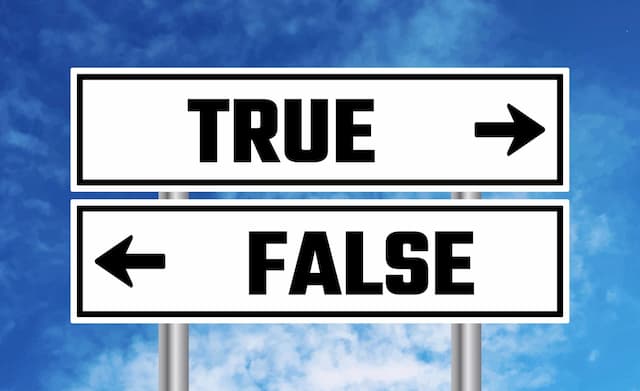Which Version of the Bible Should I Buy as a Gift? - Ron Edmondson
(This diagram is attributed online to Zondervan.com, although I could not find it on their site now.)
Every year, especially at Christmas time, one of the most common questions I receive from people in my church and online is “What Bible version should I buy as a gift?” It’s a great question, so I decided to give my answer in a post. (You may want to read THIS POST first, so you’ll understand my philosophy in not answering the question with a single answer.)
Let me make this VERY clear. I am not writing to theologians or scholars with this post…mostly because I am not one. I have been a Bible student for many years, I am a seminary-trained pastor, I have a couple master’s degrees and consider myself well-read, but this is one subject that often divides the best of scholars, and that’s not my intent with this post. This is not written for scholars, but for the average person in my church or those just beginning to become a Bible student.
So, which Bible version should you buy?
First, you should understand that every Bible we are reading today, including the King James Version (KJV) is a translation from the original text. Most of us don’t read Greek or Hebrew very well. The translators of all the major Bible translations have each attempted to take the original language and write a Bible that helps us grow in our walk with Christ.
As you can see from the diagram in this post, there are different approaches to this, with the goal leaning either more towards making it readable (thought for thought) or making it as close in accuracy to the original text (word for word).
I like to explain it like this by adding another phrase. The translators have chosen one of these approaches:
Word for word – This is where every word is attempted to be translated from the original language to an English word. If you want to be a serious student of the Bible, you’ll want a Bible using this approach. While this makes the version more accurate, it may be harder to understand at times, because we have sometimes changed the order in which we say something as much as we changed the words. The original language, for example, did not always follow the same sequence of sentence structure you learned in English class. This is one reason there are newer, more “modern” translations, trying to remain accurate, but make it more readable. (The ESV, HCSB, KJV, NKJV would be examples of this approach.)
Phrase for phrase – This is the middle of the two approach. I don’t know who originate this term, but I like it explain this approach to translations. In this attempt, instead of word for word, the translators broke sentences down into smaller phrases in the translation, so they could adapt to more of the sentence structure we use. This approach makes the Bible easier to read and is still considered an accurate translation, but may not be as accurate as the previous approach. (The NIV or NLT would be examples here.)
Thought for thought – This is where the translators, more concerned that the translation be readable, took an entire passage and translated it into the most modern language they can find. This is often called a “paraphrase” of the Bible. It can be fun to read and help illuminate a passage, but shouldn’t be considered extremely accurate when trying to apply the Bible. (The Message is the most popular example here.)
In reality, all the translations use parts of each of these approaches, but, as the diagram indicates, most will fit somewhere along this continuum.
With that explanation, here are some common versions all of which I use on a regular basis:
ESV – In recent years, this Bible has been one of my favorites. It’s actually replaced the NASB as my “go to” for accuracy Bible. I read it almost daily and more than other versions at this point. I highly recommend this translation for those wanting to read and study the Bible.
HCSB – This is one of the newer translations and fast-growing in popularity in Bible schools and personally speaking. I am liking more each day and highly recommend it. They are limited in selection at some retailers, but if you find one you like, this can be a great choice.
KJV – The King James Version is the oldest and therefore best-selling version of all times. I love it for the beauty of the language and there are some passages that I simply want to read from this translation. I do believe it uses older and harder to understand words and so I don’t usually recommend it for people as a first choice. Also, ancient texts of the original language Bible have been found since the KJV was written which have helped define some of the newer versions accuracy. (I realize those last statements alone makes me discounted by many “KJV Only” people, but that’s a whole other argument and not the focus of this post.)
The Message – This is highly readable (aimed at 3rd grade level), but it is a paraphrase. That means it’s completely translated thought-for-thought and you will lose some of the original meaning. This can be a “fun” read and I love it for illustration purposes, but I never rely on this as my sole reading experience. It’s certainly not a Bible for serious Bible study.
NKJV – The New King James Version has attempted to take the beauty and accuracy of the KJV and make it more readable. It’s a good option for those who want to feel they haven’t strayed too far from the KJV. I have several copies of this translation, including one that sits open on my desk at the office, and I do read it often.
NIV – I have preached and taught from the New International Version almost since the 1984 version was released. I love the readability. In very serious study, I always refer to another version before concluding my understanding of a passage. This remains a good option in the 1984 version, but I am not a fan of the newest revision after several major verses, such as Philippians 2:5, lost significance in the revision. (I wrote about that in THIS POST)
NLT – This is still a fairly new translation and has become a favorite of many, especially it seems among college and youth groups. It is highly readable and credible in accuracy. This is a good choice for the beginning Bible student or someone who simply wants to read for pleasure and inspiration.
(Some will wonder where the NASB is on this list. I still use it occasionally, but not as frequently as I once did.)
My advice if you are going to give a Bible to someone:
Make sure it’s readable – Open it up to several passages you enjoy and read it. Perhaps read a little in the beginning, such as Genesis 1, then read a Psalm or Proverb, then read something from one of the Gospels. Is it easy to understand for you?
Make sure it’s accurate – In most cases, if I were buying a Bible for someone because they are wanting to grow in their knowledge of the Scriptures, I would stick with something at least in the “word for word” or “phase for phrase” category, as I’ve listed them above. If you are buying for someone who already has several Bibles and just wants something fun to read or for someone who thinks they’ll never be able to understand the Bible, then something such as The Message may be an option for them, but it wouldn’t be my first choice in gifting a Bible.
Make sure it’s practical – Make sure the Bible is easy to hold, that it has a cover that fits with the person’s personality, and that it is written in a font that the person you are buying for can easily read. Also, stick with a version where there are multiple styles on the shelf when gifting a Bible. Don’t buy one that is an obscure or “unique” translation, just because it’s on sale. There may be a good reason there is only one style available and it doesn’t appear as popular of a translation.
Here’s the bottom-line for me. Find the Bible you think the person will like, you can afford, in a reliable text, and that you think they will actually read! As a pastor, I personally care less about which version you choose and more than you are reading God’s Word on a consistent basis.
Any questions?
Which Bible version do you prefer?
You may want to include a copy of 7 Ways to Make Bible Reading Fun.
Note: I welcome the “scholars” input or for you to add your own versions I’ve not talked about here. As I said, this was not written for scholars, however, but for the average person in my church or those just beginning to become a Bible student.









